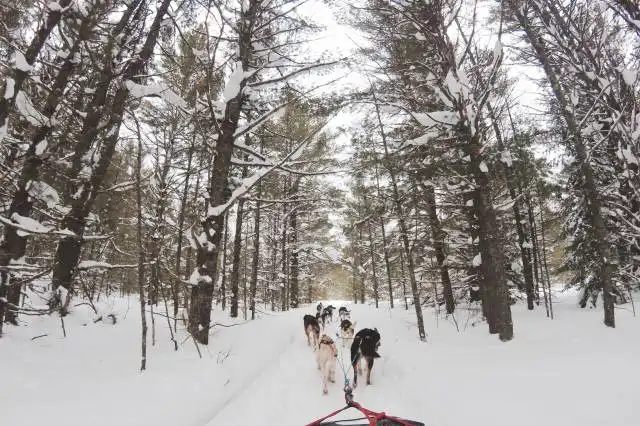Start a Bus Tour Business
Driving Towards Success: Becoming the Boss of Your Own Bus Tour Business
| Updated


BUS TOUR BUSINESS
Ever dreamt of being a tour guide while also being your own boss? If so, a Bus Tour Business might just be the thing for you. This venture operates by organizing guided tours through a city or location, mostly from the comfort of a bus. As an entrepreneur, you'll be driving around not just a vehicle, but a business filled with happy tourists learning about local sights. The open road and the opportunity to meet people from all over the world - all while making a profit - awaits you in the bus tour business!
Jump to Business Plan
RELATED BUSINESS IDEAS
Browse ALL Hospitality & Leisure Ventures Business Ideas
Discover Your Perfect Domain
Unlock the door to your online success with our hand-picked selection of premium domain names. Whether you're starting a new venture or rebranding an existing one, the right domain can set the tone for your digital presence. Browse through our curated list, each with its unique potential to enhance your brand's visibility and credibility.
BUS TOUR MINI BUSINESS PLAN
This a quick reality check to help you identify the strengths and weaknesses of your business concept before you dive in.
Business Analysis: Bus Tour Business
Expected Percent Margin:
- Gross Margin: 35-50%
- Net Profit Margin: 20-35%
Earnings Expectations:
- Daily Earnings: $400 - $700
- Weekly Earnings: $2,800 - $4,900
- Monthly Earnings: $12,000 - $21,000
- Annual Earnings: $144,000 - $252,000
Actions to Hit Those Numbers:
Vehicle Requirements:
- Bus Purchase / Lease: Secure high-quality, reliable bus/buses.
- Maintenance and Fuel: Monthly budget provision for regular check-ups and fuel.
Getting the Business on the Road:
- Route Planning: Identify key tourist spots and plan diverse, interesting tours.
- Work Schedule: Operate everyday? Weekends only? Consider tourist habits in your area.
Marketing and Customer Acquisition:
- Website and Online Booking: Create a user-friendly website for bookings and inquiries.
- Local Ads / Tourism Office: Regular advertisements in local publications and strong ties with local tourism offices.
Staffing:
- Professional Drivers: Hire experienced, licensed drivers.
- Tour Guides: Engaging guides with deep knowledge of the visited areas.
Pricing Strategy:
- Dynamic Pricing: Adjust prices depending on season, day of the week, or special events.
- Package Deals: Offer group discounts or bundled deals with hotels or restaurants.
Legal and Insurance:
- Commercial Licensing: Make sure to obtain commercial licensing for bus operation.
- Insurance: Carry enough liability insurance to cover any unforeseen incidents.
These calculations are generalized estimates. Actual earnings may vary depending on several factors, including location, competition, and the state of the tourism market. Therefore, these steps or requirements should be adjusted according to specific business needs and circumstances. A financial advisor's advice is recommended for more details and precise numbers.
NOT WHAT YOU HAD IN MIND? Here are more ideas



Browse ALL Hospitality & Leisure Ventures Business Ideas
Grab Your Business Website Name
Before you get caught up in the whirlwind of setting up your business, invest in a domain name. It's a small but significant step that lays the foundation for your brand and makes it easier for customers to find and trust you. Just like you wouldn't build a house without securing the land first, don't build a business without securing your domain name.
"Why? Can't that wait?" Here's why it shouldn't
Step 1: Determining if the Business is Right for You
Breakdown of Startup Expenses
Before starting a bus tour business, it is important to understand the startup expenses that will be required. These expenses can include the cost of the bus or buses, the cost of insurance, the cost of licensing, the cost of marketing, the cost of hiring staff, and the cost of any necessary permits. Additionally, it is important to factor in the cost of any necessary maintenance and repairs that may be needed for the bus or buses. It is also important to factor in the cost of any necessary equipment, such as a GPS system or a ticketing system. Finally, it is important to factor in the cost of any necessary software or hardware that may be needed to run the business.
Breakdown of Ongoing Expenses
Once the bus tour business is up and running, there will be ongoing expenses that must be taken into account. These expenses can include the cost of fuel, the cost of insurance, the cost of licensing, the cost of marketing, the cost of hiring staff, and the cost of any necessary permits. Additionally, it is important to factor in the cost of any necessary maintenance and repairs that may be needed for the bus or buses. It is also important to factor in the cost of any necessary equipment, such as a GPS system or a ticketing system. Finally, it is important to factor in the cost of any necessary software or hardware that may be needed to run the business.
Examples of Ways to Make Money
Once the bus tour business is up and running, there are a variety of ways to make money. One way is to charge a fee for the tour. This fee can be a flat rate or a per-person rate. Another way to make money is to offer additional services, such as food or drinks, for an additional fee. Additionally, it is possible to make money by offering discounts for groups or for repeat customers. Finally, it is possible to make money by partnering with local businesses and offering discounts for their services or products.
Step 2: Naming the Business
Naming a business is an important step in starting a bus tour business. It is important to come up with a name that is memorable, unique, and reflects the type of business. It should also be easy to pronounce and spell. When coming up with a name, consider the type of tours the business will offer, the target audience, and the geographical area. Additionally, it is important to make sure the name is not already taken by another business. Researching the name to make sure it is not trademarked or copyrighted is also important. It is also a good idea to check with the local government to make sure the name is not already registered. Additionally, it is important to make sure the domain name is available. Once the name is chosen, it is important to register it with the local government and trademark it if necessary.
Step 3: Creating a Business Plan
Creating a business plan is an essential step in starting a bus tour business. It should include a description of the business, the services offered, the target market, the pricing structure, the marketing plan, and the financial plan.
The description of the business should include the mission statement, the goals and objectives, and the legal structure of the business. It should also include the company’s history, if applicable, and any competitive advantages the business has.
The services offered should include the types of tours offered, the duration of the tours, and the destinations. It should also include any additional services offered, such as catering, transportation, and lodging.
The target market should include the demographic of the customers, such as age, gender, and income level. It should also include the geographic area in which the business will operate and the types of customers the business will target.
The pricing structure should include the cost of the tours, any additional services, and any discounts or promotions offered. It should also include the payment options available and any additional fees associated with the tours.
The marketing plan should include the methods used to promote the business, such as advertising, public relations, and social media. It should also include the budget for marketing and any partnerships or sponsorships the business has.
The financial plan should include the startup costs, ongoing expenses, and the projected income. It should also include the sources of funding, such as loans or investments, and the budget for the business.
Step 4: Obtaining Licenses and Permits
When starting a bus tour business, it is important to obtain the necessary licenses and permits. Depending on the state, the types of licenses and permits needed may vary. Generally, these include a business license, a driver's license, a commercial driver's license, and a tour guide license. Additionally, if the business will be selling food or beverages, a food service license may be necessary. It is important to check with the local and state government to determine what licenses and permits are needed.
Applying for Licenses and Permits
Once the necessary licenses and permits have been identified, the next step is to apply for them. Depending on the state, the application process may vary. Generally, the process involves filling out an application form and submitting it to the appropriate government agency. Additionally, the business may need to provide proof of insurance and other documents. Once the application is submitted, it may take several weeks for the licenses and permits to be approved.
Cost of Licenses and Permits
The cost of licenses and permits will vary depending on the state and the type of business. Generally, the cost of licenses and permits can range from a few hundred dollars to a few thousand dollars. Additionally, some states may require the business to pay an annual fee to renew the licenses and permits. It is important to research the cost of licenses and permits before starting the business to ensure that the business can afford them.
Maintaining Licenses and Permits
Once the licenses and permits have been obtained, it is important to maintain them. This involves keeping up with any changes in the regulations and renewing the licenses and permits when necessary. Additionally, the business may need to provide proof of insurance or other documents to maintain the licenses and permits. It is important to stay up to date with any changes in the regulations to ensure that the business is in compliance.
Step 5: Finding a Location
When choosing a location for a bus tour business, there are several factors to consider. First, the location should be easily accessible for customers. It should be located near popular attractions, as well as have ample parking for buses. Additionally, the location should be close to public transportation, such as bus and train stations, for customers who may not have access to a car. Second, the location should be within a reasonable distance from the business’s headquarters. This will make it easier to manage the business and keep costs low. Finally, the location should be safe and secure, as customers will be spending a lot of time in the area.
Step 6: Acquiring the Necessary Equipment
Types of Equipment Needed
In order to run a successful bus tour business, the necessary equipment must be acquired. First, the business must acquire a bus or multiple buses, depending on the size of the business. The bus should be comfortable and have enough seating for all passengers. Additionally, the bus should have a working sound system, air conditioning, and other amenities that customers may expect. Second, the business should acquire a GPS system, as this will help the driver navigate the area and provide customers with an interactive experience. Third, the business should acquire a ticketing system, which will help keep track of customers and payments. Finally, the business should acquire any other necessary equipment, such as a first aid kit, fire extinguisher, and other safety items.
Step 6: Purchasing a Bus
When purchasing a bus for a bus tour business, there are several factors to consider. First, consider the size of the bus. Depending on the size of the tour group, a larger or smaller bus may be necessary. Additionally, consider the cost of the bus and the associated maintenance costs. It is important to research the bus’s safety ratings and the reliability of the bus. Furthermore, consider the fuel efficiency of the bus. Finally, consider the amenities of the bus. Depending on the type of tour, certain amenities may be necessary.
Financing Options
When purchasing a bus, there are several financing options available. One option is to purchase the bus outright. This option is ideal for those who have the capital to do so. Another option is to take out a loan. This option is ideal for those who do not have the capital to purchase the bus outright. Additionally, there are leasing options available. This option is ideal for those who do not want to commit to purchasing the bus. Finally, there are rent-to-own options available. This option is ideal for those who want to eventually own the bus but need time to save up for the purchase.
Insurance
When purchasing a bus, it is important to consider the insurance costs. Depending on the type of tour, certain types of insurance may be necessary. It is important to research the different types of insurance available and the associated costs. Additionally, consider the cost of liability insurance. This type of insurance is important to have in case of an accident or injury. Furthermore, consider the cost of comprehensive insurance. This type of insurance covers damages to the bus due to theft, vandalism, or natural disasters. Finally, consider the cost of collision insurance. This type of insurance covers damages to the bus due to an accident.
Step 7: Hiring Employees
When hiring employees for your bus tour business, it’s important to find people who are passionate about the business and have the right skills and experience. You may want to consider hiring individuals who have a background in customer service, tour guiding, or marketing. Additionally, it’s important to make sure that your employees understand the company’s policies and procedures and are able to follow them. It’s also important to make sure that your employees are familiar with the local area and can provide accurate information to customers.
Training Employees
Once you’ve hired the right employees, it’s important to provide them with the necessary training. This should include training on customer service, tour guiding, and safety procedures. Additionally, you should provide your employees with the necessary resources to ensure that they are prepared for any situation that may arise. This could include providing them with maps, brochures, and other materials that will help them provide the best experience for your customers.
Establishing Policies and Procedures
It’s also important to establish policies and procedures for your employees to follow. This should include guidelines on customer service, tour guiding, and safety procedures. Additionally, you should establish rules and regulations for your employees to follow. This could include rules on dress code, punctuality, and other important aspects of the job.
Setting Compensation
Finally, it’s important to set the compensation for your employees. This should include a competitive salary and benefits package that will attract the best employees. Additionally, you should consider offering bonuses or incentives to your employees for meeting certain goals or benchmarks. This will help motivate your employees and ensure that they are providing the best service possible.
Step 8: Promoting the Business
Promoting a bus tour business is essential for success. There are a variety of ways to promote the business, such as creating a website, using social media, and advertising in local newspapers. Creating a website is a great way to showcase the business and provide potential customers with information about the tours. Social media is also a great way to reach potential customers. Platforms like Facebook, Instagram, and Twitter are all great ways to promote the business. Advertising in local newspapers is also a great way to reach potential customers.
Tips for Promoting the Business
When promoting the business, it is important to focus on the unique aspects of the business. For example, if the bus tour business specializes in historical tours, focus on the historical aspects of the tours. Additionally, it is important to create engaging content that will draw potential customers in. Content should be informative and entertaining. Additionally, it is important to be consistent with promotions. Posting regularly on social media and advertising in local newspapers on a regular basis will help to ensure that potential customers are aware of the business. Finally, it is important to track the success of promotions and adjust accordingly. This will help to ensure that the business is reaching the right audience.
Step 9: Setting Prices
Setting prices for a bus tour business can be a difficult task. It is important to consider the cost of the tour, the cost of the bus, and the cost of the driver. Additionally, it is important to consider the cost of any additional services that may be offered, such as food or entertainment. It is also important to consider the cost of marketing and advertising. Finally, it is important to consider the competition and the cost of their services.
Examples of Pricing Strategies
When setting prices for a bus tour business, it is important to consider different pricing strategies. One example of a pricing strategy is to offer discounts for large groups or for repeat customers. Another example is to offer discounts for early bookings or for customers who book multiple tours. Additionally, it is important to consider offering a loyalty program or a referral program to help encourage customers to book with the business. Finally, it is important to consider offering discounts for customers who book multiple tours or who book tours during off-peak times.
EXPLORE MORE CATEGORIES
Browse ALL Business Idea Categories
TAKE THE NEXT STEPS










